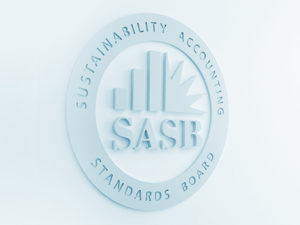
Tom Riesenberg, Former Director of Legal & Regulatory Policy, SASB
Advocates of improved environmental, social, and governance (ESG) disclosures have long sought the end of silos, where interest in sustainability issues can extend beyond the company’s sustainability office to the financial reporting group. That has increasingly happened in the past year or two, as various commentators have noted. But perhaps lost in the shuffle has been another trend, namely a substantial increase in the attention being given to ESG by lawyers—within a company’s general counsel’s office, at law firms, and in academia. This is important: lawyers, particularly within the United States, have often been reluctant to push for more ESG disclosure on the theory that “if it isn’t required, then don’t do it.”
A number of recent scholarly law articles about ESG warrant particular attention. These articles provide interesting new research and ideas about corporate fiduciary duties, corporate responsibility, disclosure liability risks, shareholder versus stakeholder primacy, and other topics. SASB has long offered “thought leadership” regarding sustainability, and in that vein we describe below two recent scholarly legal articles that address an important topic—how sustainability, including sustainability disclosure, is related to compliance and reduction in corporate risk.
First, in an article to be published in a forthcoming issue of the Vanderbilt Law Review, “Corporate Law and Social Risk,” two professors from the Berkeley Law School, Stavropol Gadinis and Amelia Miazad, describe how the compliance function has expanded enormously at most companies because statutory and case law developments have required it. Compliance, however, “is tethered to legal violations,” while sustainability “encourages intervention even when laws have not caught up.” Thus, “ESG serves shareholders’ interests not because of its potential to increase profits but because it helps companies identify and manage risks to their business.”
The relationship between ESG and risk is not, of course, a new idea. But the two authors argue that Delaware courts “should recognise that by failing to build up their companies’ ESG functions, directors and officers are exposing their shareholders to increased risks.” Further, the authors contend that directors may expose themselves to violations of their duty of loyalty if they fail to put in place adequate ESG mechanisms. In this regard, the authors argue that ESG disclosure is not, by itself, sufficient to fulfil ESG’s risk-protection role.
The second article of note is authored by Leo E. Strine Jr., the former Chief Justice of the Delaware Supreme Court who is now with the New York firm of Wachtell Lipton, along with lawyers Kirby M. Smith and Reilly S. Steel. They have posted a Discussion Paper on a Harvard Law School website entitled “Caremark and ESG, Perfect Together: A Practical Approach to Implementing An Integrated, Efficient, and Effective Caremark and EESG Strategy.” Note that the term “EESG” is not a typo; Strine and others have begun adding an “E” to emphasise that employees deserve their own acronymic initial, rather than being subsumed within the “S” for social.
Strine and his colleagues argue that, while Gadinis and Miazad urge modification of Delaware law to include ESG considerations within directors’ fiduciary duties, they believe that ESG should be linked to the longstanding duty of corporations and their directors to implement and monitor compliance programs to ensure that the company honors its legal obligations. (This is the significance of the Caremark decision referred to in the article’s title—that case increased the focus on the need for corporations to have compliance procedures in place to protect against unlawful corporate conduct.) The authors argue that a company is much more likely to meet its minimum legal and regulatory duties if it strives to be an “above-average corporate citizen”; thus, “EESG and ordinary compliance should be seen as interconnected and be accomplished in an integrated one-step process.” With such integration, they state, “corporate leaders can efficiently generate robust information about their EESG performance, provide corporate stakeholders with good information about the company’s legal compliance and EESG efforts, and simultaneously fulfil their duty to monitor the corporate enterprise.”
Delaware law provides strong protection for the exercise of “business judgement” by corporate leaders. Thus, Strine and his colleagues write, “a corporation can decide that its reputation for above-board conduct, for acting in a manner that does not skirt the law and that shows respect for society, is valuable, and based on that business judgement a corporation can also embrace a culture that gives primacy to ethical practices, even when such practices might not generate the most profit.” The authors also discuss how the information available through compliance reporting systems can provide “a useful starting point” for ESG reporting.
These authors note that their article and the piece by Gadinis and Miazad are part of the “nascent literature that has begun to connect EESG and corporate compliance.” This is an area of scholarly research that should be followed closely.
Tom Riesenberg is Former Director of Legal & Regulatory Policy at SASB.
